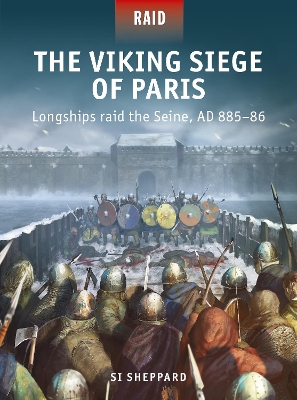Raid
2 total works
He masterminded the most devastating surprise attack against the United States in its history. He was a marked man in the war that followed. A key intelligence breakthrough enabled the military to pinpoint his location. An elite team was assembled and charged not with his capture and subsequent trial but with his execution. Osama bin Laden? No - this was Admiral Isoroku Yamamoto, the Commander-in-Chief of the Japanese Combined Fleet during World War II.
This new title analyses the origins, implementation, and outcomes of Operation Vengeance, the long-range fighter interception of Admiral Yamamoto's transport aircraft that sent him to his death on 18th April, 1943. Author Si Sheppard examines every angle of the operation in detail, including the role of intelligence work in pinpointing the time and location of Yamamoto's flight, the chain of command at the highest level of the US political and military establishment who ordered the attack, and the technical limitations that had to be overcome in planning and conducting the raid. It also provides a close study of the aerial combat involved in completing the mission, offering a holistic exploration of the operation which avenged Pearl Harbor.
This new title analyses the origins, implementation, and outcomes of Operation Vengeance, the long-range fighter interception of Admiral Yamamoto's transport aircraft that sent him to his death on 18th April, 1943. Author Si Sheppard examines every angle of the operation in detail, including the role of intelligence work in pinpointing the time and location of Yamamoto's flight, the chain of command at the highest level of the US political and military establishment who ordered the attack, and the technical limitations that had to be overcome in planning and conducting the raid. It also provides a close study of the aerial combat involved in completing the mission, offering a holistic exploration of the operation which avenged Pearl Harbor.
The Vikings’ siege of Paris in 885–86 was a turning point in the history of both Paris and France. In 885, a year after Charles the Fat was crowned King of the Franks, Danish Vikings sailed up the Seine demanding tribute. The Franks’ refusal prompted the Vikings to lay siege to Paris, which was initially defended by only 200 men under Odo, Count of Paris, and seemingly in a poor state to defend against the Viking warriors in their fleet of hundreds of longships.
Paris was centred around the medieval Île de la Cité, the natural island now in the heart of the city, fortified with bridges and towers. The Vikings attempted to break the Parisian defenders, but the city itself still held out, and after a year Charles’ army arrived to lift the siege. But Charles then allowed the Vikings to sail upstream against the revolting Burgundians. Outraged at this betrayal, the Parisians refused to let the Vikings return home via the Seine, forcing them to portage their boats overland to the Marne in order to reach the North Sea. When Charles died in 888, the people of the of the Île de France elected Odo as their king. The resistance of Paris therefore marked the end of the Carolingian line and the birth of a new kingdom.
This fully illustrated volume, accompanied with maps and strategic diagrams tells the full story of the Vikings' expedition to conquer medieval Paris, highlighting a key moment in the history of France and its foundation as a nation.
Paris was centred around the medieval Île de la Cité, the natural island now in the heart of the city, fortified with bridges and towers. The Vikings attempted to break the Parisian defenders, but the city itself still held out, and after a year Charles’ army arrived to lift the siege. But Charles then allowed the Vikings to sail upstream against the revolting Burgundians. Outraged at this betrayal, the Parisians refused to let the Vikings return home via the Seine, forcing them to portage their boats overland to the Marne in order to reach the North Sea. When Charles died in 888, the people of the of the Île de France elected Odo as their king. The resistance of Paris therefore marked the end of the Carolingian line and the birth of a new kingdom.
This fully illustrated volume, accompanied with maps and strategic diagrams tells the full story of the Vikings' expedition to conquer medieval Paris, highlighting a key moment in the history of France and its foundation as a nation.

